
Strategic sealift ships are part of the United States Military Sealift Command's (MSC) prepositioning program. There are currently 17 ships in the program, strategically positioned around the world to support the Army, Navy, Air Force, Marine Corps and Defense Logistics Agency. Most are named after Medal of Honor recipients from the service they support. The ships are assigned to two Military Prepositioning Ship (MPS) squadrons located in the Indian Ocean at Diego Garcia and in the Western Pacific Ocean at Guam and Saipan.

The Victory ship was a class of cargo ship produced in large numbers by North American shipyards during World War II to replace losses caused by German submarines. They were a more modern design compared to the earlier Liberty ship, were slightly larger and had more powerful steam turbine engines, giving higher speed to allow participation in high-speed convoys and make them more difficult targets for German U-boats. A total of 531 Victory ships were built in between 1944 and 1946.

SS Gopher State (T-ACS-4) is a crane ship in ready reserve for the United States Navy. The ship was named for the state of Minnesota, which is also known as the Gopher State.

SS Flickertail State (T-ACS-5) is a crane ship in ready reserve for the United States Navy. She is stationed at Newport News, Virginia and is in ready reserve under the Military Sealift Command (MSC). The ship was named for the state of North Dakota, which is also known as the Flickertail State.

The Gopher State-class crane ships of the United States Navy are a class of auxiliary vessels. The lead ship of the class is named in honor of the state of Minnesota. Original United States Maritime Administration (MARAD) designation for the ship is C5-S-73b.

SS Cornhusker State (T-ACS-6) is a crane ship in ready reserve for the United States Navy. She is stationed in Newport News, Virginia under operation control of the Military Sealift Command (MSC). The ship was named for the state of Nebraska, which is also known as the Cornhusker State.

An Auxiliary Crane Ship is a vessel of the United States Military Sealift Command designed to operate where port facilities are limited or damaged to transfer cargo between themselves, other vessels, and piers.

The Type C4-class ship were the largest cargo ships built by the United States Maritime Commission (MARCOM) during World War II. The design was originally developed for the American-Hawaiian Lines in 1941, but in late 1941 the plans were taken over by the MARCOM.

SS Algol is an Algol-class vehicle cargo ship that is currently maintained by the United States Maritime Administration as part of the Military Sealift Command's Ready Reserve Force. She was built as a high speed container ship by Rotterdamsche Droogdok Maatschappij N.V. in Rotterdam, the Netherlands, hull no. 331, for Sea-Land Service, Inc. and named SS Sea-Land Exchange, USCG ON 546383, IMO 7303205. Due to her high operating cost, Sea-Land Exchange was sold to the United States Navy in October 1981 as USNS Algol (T-AK-287).

SS Bellatrix is an Algol-class vehicle cargo ship that is currently maintained by the United States Maritime Administration as part of the Military Sealift Command's Ready Reserve Force (RRF). She was built as a high-speed container ship by Rheinstahl Nordseewerke, Emden, West Germany, hull no. 430, for Sea-Land Service, Inc. and named SS Sea-Land Trade, USCG ON 545201, IMO 7236153. Due to her high operating cost, Sea-Land Trade was sold to the United States Navy in October 1981 as USNS Bellatrix (T-AK-288).
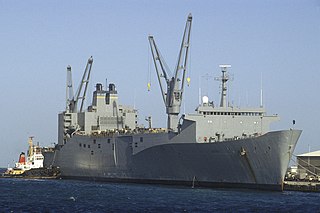
SS Denebola is an Algol-class vehicle cargo ship that is currently maintained by the United States Maritime Administration as part of the Military Sealift Command's Ready Reserve Force (RRF). She was built as a high speed container ship by Rotterdamsche D.D.Mij N.V. in Rotterdam, Netherlands, hull no. 332, for Sea-Land Service, Inc. and named SS Sea-Land Resource, USCG ON 550723, IMO 7325253. Due to her high operating cost, she was sold to the United States Navy in October 1981 as USNS Denebola (T-AK-289).
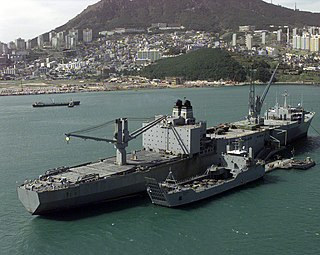
USNS Pollux (T-AK-290), later T-AKR-290, the fourth United States Navy ship of the name, is an Algol-class vehicle cargo ship that is currently maintained by the United States Maritime Administration as part of the Ready Reserve Force (RRF) as SS Pollux (T-AKR-290).

SS Altair is an Algol class vehicle cargo ship that is currently maintained by the United States Maritime Administration as part of the Military Sealift Command's Ready Reserve Force (RRF). She was built as a high speed container ship by Rheinstahl Nordseewerke in Emden, West Germany, hull no. 431, for Sea-Land Service, Inc. and named SS Sea-Land Finance, USCG ON 550722, IMO 7315571. Due to her high operating cost, she was sold to the United States Navy on 5 January 1982 as USNS Altair (T-AK-291).
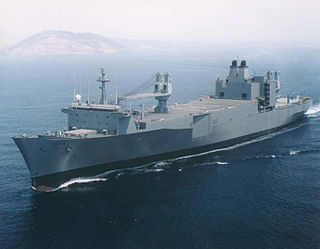
SS Regulus is an Algol class vehicle cargo ship that is currently maintained by the United States Maritime Administration as part of the Military Sealift Command's Ready Reserve Force (RRF). She was built as a high speed container ship by A.G. Weser in Bremen, West Germany, hull no. 1383, for Sea-Land Service, Inc. and named SS Sea-Land Commerce, USCG 545200, IMO 7302897. Due to her high operating cost, she was sold to the United States Navy on 27 October 1981 as USNS Regulus (T-AK-292).

SS Capella is an Algol class vehicle cargo ship that is currently maintained by the United States Maritime Administration as part of the Military Sealift Command's Ready Reserve Force (RRF). She was built as a high speed container ship by Rotterdamsche D.D.Mij N.V. in Rotterdam, Netherlands, hull no. 330, for Sea-Land Service, Inc. and named SS Sea-Land McLean, USCG ON 540413, IMO 7223508, after Sea-Land's founder Malcom McLean. Due to her high operating cost, she was sold to the United States Navy on 16 April 1982 as USNS Capella (T-AK-293).
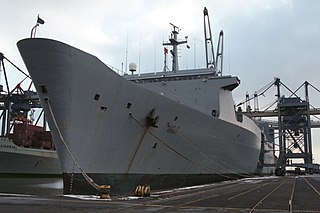
SS Antares is an Algol class vehicle cargo ship that is currently maintained by the United States Maritime Administration as part of the Military Sealift Command's Ready Reserve Force (RRF). She was built as a high speed container ship by A.G. Weser in Bremen, West Germany, hull no. 1382, for Sea-Land Service, Inc. Baptized in Bremerhaven by Helga Wedekind, the ship was named SS Sea-Land Galloway, USCG ON 542200, IMO 7226897. Due to her high operating cost, she was sold to the United States Navy on 16 April 1982 as USNS Antares (T-AK-294).

The Moore-McCormack Lines was a series of companies operating as shipping lines, operated by the Moore-McCormack Company, Incorporated, later Moore-McCormack Lines, Incorporated, and simply Mooremack, founded in 1913 in New York City. It ceased trading on its buy-out in 1982. The founders were Albert V. Moore (1880–1953) (director/president) and Emmet J. McCormack (director/treasurer), with Mr Molloy (director/secretary).

SS Keystone State (T-ACS-1) is a crane ship in ready reserve for the United States Navy. The ship was named for the state of Pennsylvania, which is also known as the Keystone State.

SS Diamond State (T-ACS-7) is a crane ship in the National Defense Reserve Fleet (NRDF) for the United States Navy. The ship was named for the state of Delaware, which is also known as the "Diamond State". The ship was initially a bulk freighter named SS Japan Mail when launched in 1961 and entered service in 1962 with the American Mail Line. In 1971, the ship was lengthened and renamed SS President Truman. In 1987, the vessel was taken over by MARAD and converted to a crane ship and in 1989, renamed Diamond State.
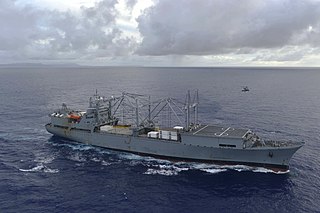
The Type C5 ship is a United States Maritime Administration (MARAD) designation for World War II breakbulk cargo and later a container ship for containerization shipments. The first type C5-class ship was a class of ships constructed and produced in the United States during World War II. The World War II C5-class ship was dry bulk cargo ship built by Bethlehem Steel in Sparrows Point, Maryland. Bethlehem Steel built eight ships in this bulk cargo class and four orders were canceled. The C5-class ship has a 24,250 DWT and was 560 feet (170 m) long. The C5 was mainly used as iron ore carriers. The C5 was needed to replace other ships that sank during World War II. First in her class was SS Venore, USMC #1982, delivered on 20 July 1945. The Type C5-class ship designed to fill the need to move iron ore from Santa Cruz, Chile, to Sparrows Point, Maryland, through the Panama Canal, a round-trip of 8,700 nautical miles . Post World War II, four ships were given C5 class type C5-S-78a, these were roll-on/roll-off container ship built by Ingalls Shipbuilding, Inc. of Pascagoula, Mississippi and operated by the Moore-McCormack Lines. The C5-S-78a had a deadweight tonnage of 16,000 tons.



















